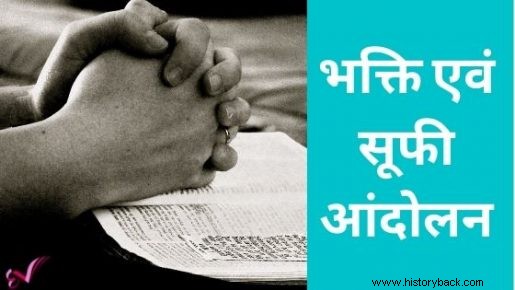Today in this article we are going to tell you about Bhakti and Sufi movement.

The Bhakti movement was first started by the Alvar saints in the medieval period. Ramananda is credited with starting the Bhakti movement in North India. Ramanand was born in Prayag (Allahabad). He popularized the devotion of Rama as an incarnation of Vishnu.
Kabir emphasized on Hindu-Muslim unity. His works are stored in Bijak. Nirguna was the main poet of the Bhakti stream.
Guru Nanak was born in Nankana Sahib (Talwandi). He emphasized on Hindu-Muslim unity.
Chaitanya was the originator of the Bhakti movement in Bengal. He gave birth to the practice of Kirtan.
Surdas belonged to the Krishna Bhakti tradition. He popularized the Radha-Krishna ideal love of his treatise Sursagar.
Saint Narsingh Mehta of Gujarat was related to Radha-Krishna Bhakti.
Four Bhakti sects were established in the south by Vaishnava saints in protest against the wonderful philosophy of Shankaracharya.
The organization of Sufis was called Silsila, people who took education from Sufi saints. He was called Murid.
The founder of the Chishti sect was Khwaja Moinuddin Chishti. His tomb is located in Ajmer.
Some of Baba Farid's compositions are included in the Guru Granth Sahib.
Kingdoms of the South – Vijayanagara, Bahmani Kingdom, Mughal and Maratha Empire
Hazrat Nizamuddin Auliya saw the rule of the Sultans of Delhi during his lifetime. Delhi is far away now, this country was telling by Nizamuddin Auliya to Ghiyasuddin Tughlaq.
Shaikh Abdullah Satari founded the Satari Silsila. Its main center was Bihar.
The founder of Roshni or the sect was Wajid Ansari. Firdausi, a branch of the Sohar period tradition, developed in East India, especially in Bihar, whose important saint was Sarf Uddin Yahra Amneri.
